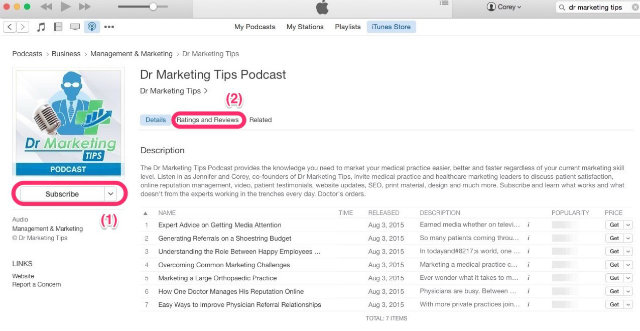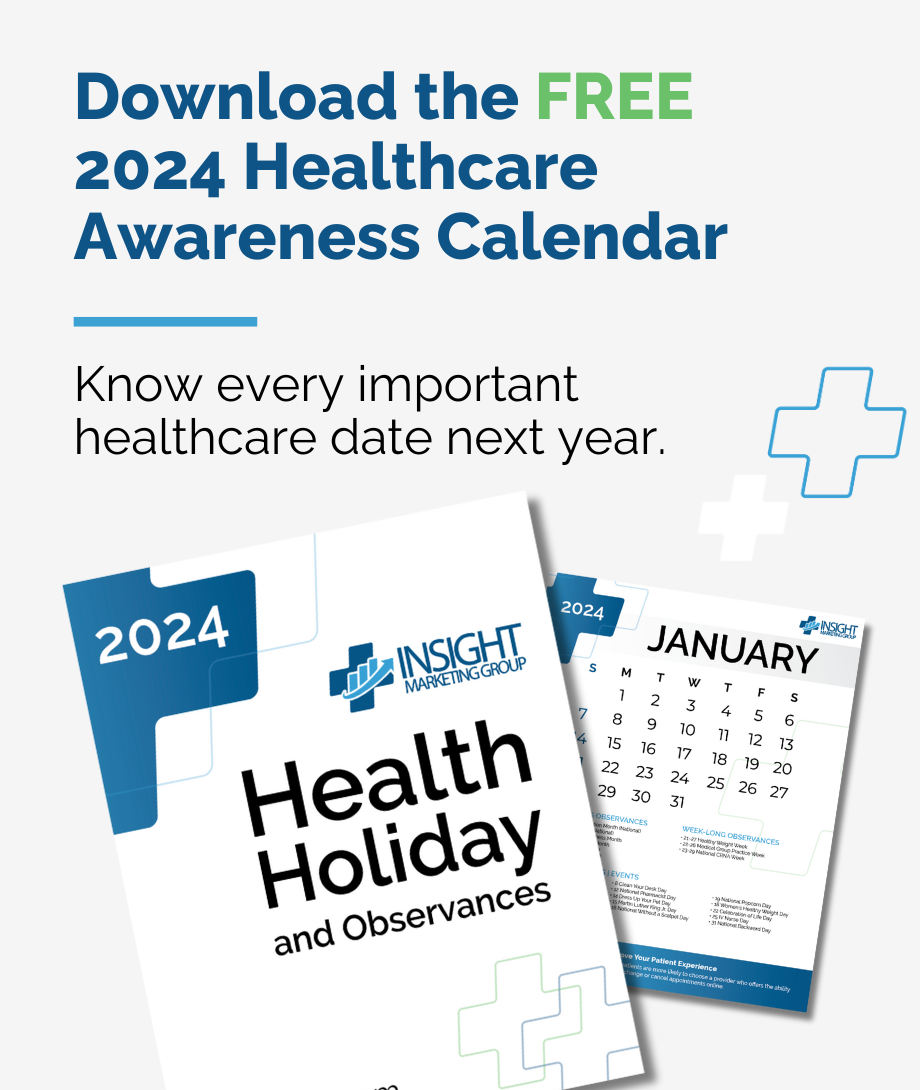 You’ve spent countless hours, blood, sweat, and tears, not to mention boatloads of money to market your medical practice, yet another 1-star review has hit you smack in the face.
You’ve spent countless hours, blood, sweat, and tears, not to mention boatloads of money to market your medical practice, yet another 1-star review has hit you smack in the face.
WTH? (that means ‘what the heck?’).
To get to the root of the problem and fix it, you first need to understand it. More often than not, bad reviews have nothing to do with the doctor’s care and everything to do with how an employee treated a patient (or how that patient perceived it).
The key to avoiding 1-star reviews is to focus on getting to the root of the problem. Differences in communication styles can impact critical patient-employee interactions, not to mention back-office challenges amongst employees. Understanding the differences between millennial and Baby Boomer patients and employees will allow you to focus on the cause rather than wasting time and money trying to ‘market’ your way into a more positive reputation.
This week we sit down with Susan Makowski, Client Services Manager at Insight Training Solutions, to break down how each generational segment within your office communicates and how you can harness the strengths (and manage the weaknesses) of each style to better serve and meet the needs of your multigenerational patients.
Tune in to discover:
- A breakdown of the dominant features of the five generational groups that may be present in your office (and how they send and receive communication)
- Communication tools to avoid intergenerational communication breakdowns within your office
- Simple and effective tips you can use to enhance communication between employees, patients, and management
- Why investing in your people and helping them be better at their jobs translates into an improved patient experience
Free Healthcare Awareness 2024 Calendar
Nearly every month of the year has a health holiday or observance, and there are also a number of awareness months that your patients and staff would love to know about. You also don’t want to miss chances to celebrate with your practice’s followers.
Free Healthcare Awareness 2023 Calendar
Nearly every month of the year has a health holiday or observance, and there are also a number of awareness months that your patients and staff would love to know about. You also don’t want to miss chances to celebrate with your practice’s followers.
Transcription
Speaker 1: Dr Marketing Tips. Paging Dr Marketing Tips. You’re needed in the marketing department. Welcome to the Dr Marketing Tips podcast, your prescription to the answers you seek to grow your medical practice easier, better, and faster. This show is all about connecting practice administrators and medical marketing professionals with peers working in practices, learning from experiences, making mistakes, and sharing successes. Let’s get started.
Jennifer: Hey there. Welcome to the Dr Marketing Tips Podcast. I am Jennifer and I am your host this week. Later on in this episode, we’re going to be joined by Susan, who runs things over at our sister company, Insight Training Solutions, but I want to go ahead and tee things up first. What we’re talking about really are these communication styles across different generations. As somebody who manages marketing programs for independent medical practices with a team over at Insight Marketing Group, I feel like we are constantly … we have these conversations all the time, but we’re constantly now just mitigating one star reviews.
Our marketing programs, although they’re very proactive and we focus on putting patient stories first, lately in the last couple of years but especially in the last 18 months, it feels like what we’re doing is trying to manage the reputation of the practice. It’s typically not the doctor that’s causing a one star review, but it’s something having to do with miscommunication or different styles of communication or whatever it might be.
The fact is, you can throw dollars at the problem until the bank runs dry, but if we don’t get our hands around the root of the problem, then we’re never gonna get ahead. For the most part, there are … there’s probably five different generations out there right now and each generation communicates differently, and each generation receives communication differently. Add to that, you’ve likely got three generations working for you right now and each of them need to know how to communicate with patients.
You’ve probably got on your payroll Baby Boomers, chances are your doctors, or a handful of them, are Baby Boomers. You’ve got Generation X. I’m a Generation X person and likely you have Generation X folks in management roles throughout your organization. Then you have Millennials who are probably your, mainly your front line but they’re starting to roll into the management roles as well. Each of us gives and receives communication differently. It appears that the wider the spectrum in age, the harder it is to start bridging the gap in these communication styles.
In fact, what I call the art of communication, or the soft skill, of starting and actually holding a conversation is becoming harder and harder to come by, especially as we move towards those younger folks. It’s not necessarily their fault either. Each of us were raised differently, each of us have experience, differing degrees of technology adoption, and each of us grew up with a different level of expectations, which is partly that diversity if what makes it all so interesting.
I don’t know about you, but as I have become a little bit older and have more information available to me at any given time, I feel like my brain gets full and my soft skills seem to be deteriorating. Where I used to be able to sit and have a conversation with anybody and felt as if I had a very diverse vocabulary, I feel like I pull now from the same 150 words and that my ability to have small talk has really diminished over the years. I blame a lot of that to the fact that there’s so much technology and so much information and so many interruptions.
So I think now, let’s go ahead and listen in on a conversation that I had with Sue where we’re talking about different communication styles across these generations, in particular and how somebody in your office of one generation might be able to improve their communication when dealing with somebody, a potential patient, of another generation. There are some very real things that we can do and that you can implement in your practice to help improve this, which your marketing team and your physicians will thank you because when we go to the root of the problem, we’re able to address those review sites and those gradients that we’re also focused on. So let’s listen in.
Call Out: If you like what you’re hearing and need some help marketing your medical practice this year, be sure to check us out at insightmg.com, that’s Insight M as in marketing, G as in group dot com. Don’t think you’ve got a budget for this kind of stuff? Think again. We’ve got you covered. Make sure you schedule a free consult today.
Yeah, I was dealing with a communication breakdown yesterday, I feel like I was dealing with a communication breakdown the day before. Typically I get into arguments with my Baby Boomer colleagues and it’s because I like to move at a little quicker pace and sometimes they like to explain things until they’re blue in the face and then geez, like the Millennials, they’re following, they’re using the technology to put something into our system but then they’re not also communicating with me. I can never get them on the phone so it’s just … it’s so frustrating. I don’t know how you do it, Sue, dealing with your mom sometimes. I know she’s a traditionalist. How do you communicate effectively across these generations? That’s what I guess I’m asking.
Susan: That’s a great point. It’s hard enough to try and bridge the communication gap with our office with our multi-generational staff, yet let’s translate that out to the patient and with my mom being a traditionalist, she doesn’t understand tech talk. She doesn’t understand IMO and FOMO. It’s best that when she goes to the doctor’s offices that you minimize the jargon and you minimize abbreviated talk because she’s not from that generation that they understand that, and that’s just one of the top tips for dealing with someone who is a traditionalist.
Jennifer: Yeah. Sometimes you and I have some communication breakdowns. I’m a Gen X and you’re a Baby Boomer, and I think that the tip that you’ve always told me is that, look, I’m of the generation that likes you to simplify it, simplify the solution and be absolutely the most direct with me as you can possibly be and I like to over complicate, you like to simplify the conversation and get right to the point. I think that’s a communication style that’s very closely tied with the Baby Boomers. How do you see it from you communicating with me, how do you see that Gen X-ers kind of work?
Call Out: Hey there. Replacing an employee can be expensive, upward of 50% of that employee’s annual salary. Did you know that only 33% of your employees are actually engaged at work? What if you could invest in engaging and training your employees for as little as eight dollars per month with training that’s specific to the challenges you face in your medical practice, like customer service, patient experience, communicating across generations, just to name a few? Well, visit us at insightmg.com to find out more about how our employee engagement and training platform can help you strengthen employee retention, develop patient service mindsets, and give you peace of mind when it comes time for annual reviews, all without creating any additional work for you and it’s only eight bucks a month. Check us out at Insight, M as in marketing, G as in group, dot com. We’ll be waiting for you.
Susan: Gen-Xers are very independent thinkers and they want to know that they’ve had input, they want to be part of the solution basically. You want to make them part of the process and bring them in on that. Don’t just say to them what their treatments will be or what their next step in their management of what they’re health issue is, actually bring them in as part of that process.
Jennifer: Yeah, totally. All right, so what about the one that we heard about the most, which is how do we communicate with Millennials and that next generation that comes after them?
Susan: They want to be heard and the easiest thing to do with them is just let them talk, let them … because you know they’ve gone online and they’ve done all their research and so they want to understand what the latest and greatest of medical technology is out there and the best thing to do with them is offer them feedback.
Jennifer: Yeah. I could see that. We work with a lot of Millennials and they want good immediate feedback and they also like to communicate using technology. Yeah these are really good points and it helps me when I’m dealing with so many different generations in the office that I work in and my office is actually inside … well, you know this. My office is inside a medical practice and so I’m dealing with this every single day, it’s coming at me every direction.
Susan: I think the number one tip, and it doesn’t matter what generation you are, is to show empathy. That is I think the best communication tool and it doesn’t matter if you’re dealing with a Millennial, it doesn’t matter if you’re dealing with a Baby Boomer, just show empathy with them and that does create that connection and makes them feel valued.
Jennifer: Yeah. I think this is all good stuff and I think this is why the generational training that we’re doing over at Insight Training Solutions is going to have such an impact, because investing in our people and helping them be better at their jobs every single day translates to a better patient experience. Sue, I want to say thanks again and I really appreciate you taking the time to have these conversations with me. With that, I am Jennifer.
Susan: I’m Susan.
Jennifer: Thanks for joining us on the Dr Marketing Tips Podcast. We’ll see you next time. Thank you.
Speaker 1: Thanks for listening to the drmarketingtips.com podcast. If there’s anything from today’s show you want to learn more about, check out drmarketingtips.com for our podcast resource center with all the notes, links, and goodies we mentioned during the show. If you’re not already a subscriber to our show, please consider pressing the subscribe button on your podcast player so you never miss one of our future episodes. If you haven’t given us a rating or review yet on iTunes, please find a spare minute and help us reach and educate even more of our medical practice peers. Thanks again for listening, and we’ll catch you next time. Doctor’s orders.
Subscribing and Rating Our Podcast
If you like what you heard, please take a few seconds and subscribe, rate and review our show on iTunes. Here’s how:
Subscribe
To subscribe, click this link to open iTunes on your computer or press the green “Subscribe” button under the podcast player on this page just above this message. Once you’re in iTunes, you’ll find a “Subscribe” button as denoted by the (1) on the image below. After you’re subscribed, click the “Ratings and Reviews” button (2).

Ratings and Reviews
To leave us a rating and review, select the “Ratings and Reviews” button referenced above (2). Once there, select a star rating for the show (3) and leave your brief review (4).

